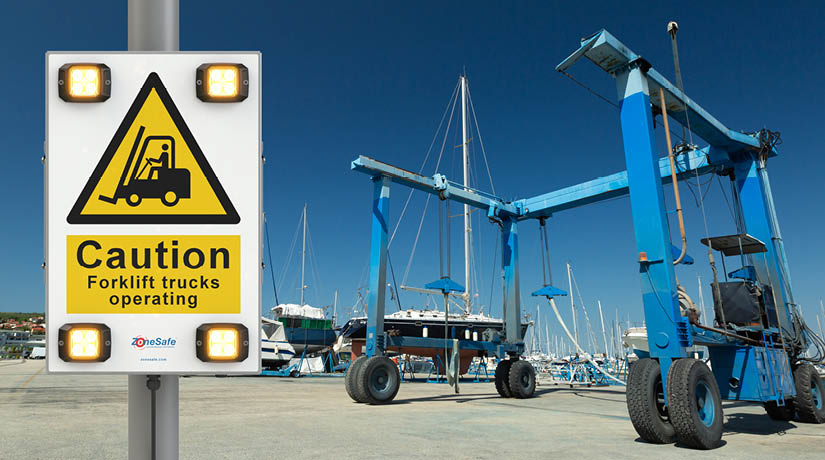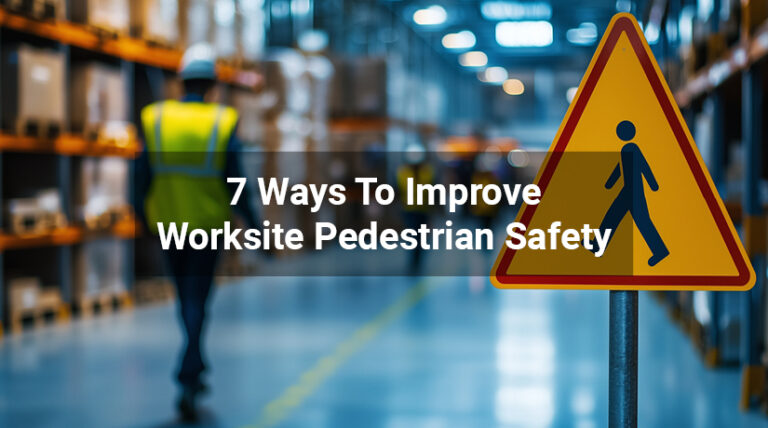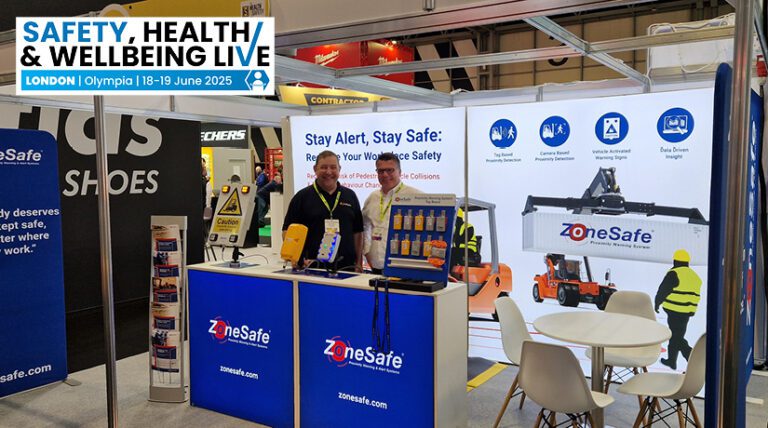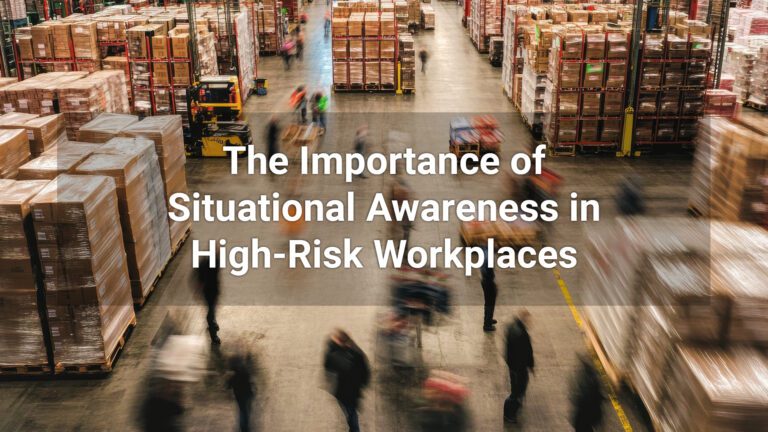Regarding maritime safety, ports and marinas can often be dangerous places to work and visit. Multiple operations and a wide range of industrial equipment and vehicles work around each other in confined spaces. The diverse range of activities, from lifting and launching to cleaning and repairs and operating heavy machinery and vehicles, creates a complex and challenging environment. The presence of pedestrian workers and members of the public alongside this type of activity equates to increased risk, so precautions should always be taken to ensure safe operation.
Where workplace transport and people operate closely together, there is always potential for serious accidents, and ports and marinas are no exception. In 2017, a pontoon traffic marshal was struck by a reversing delivery van at the port terminal. The man suffered multiple serious injuries, including skull and body fractures, and lost sight in one eye. The HSE investigation found a lack of effective control and segregation between pedestrian workers and moving vehicles as a key factor in the incident[1].
Many of the vehicles commonly used at ports and marinas, such as straddle carriers, reach stackers, cranes, and forklifts, can suffer from limited driver visibility, which obviously contributes to the risk. Operations take place all hours of the day, often in adverse weather conditions, with lots of noise and low visibility, which adds to the challenge.
Common workplace transport risks around ports and marinas and maritime safety include:
- Chute de charges instables
- Chargement et déchargement des véhicules
- Absence de séparation entre les piétons et les véhicules aux points d'accès
- Accouplement et désaccouplement de remorques et de navires
- Véhicules en marche arrière
- Circulation des véhicules autour des navires et des quais
Alors que les travailleurs sont formés pour être conscients de ces problèmes, l'ajout du public dans le mélange crée une couche supplémentaire de considération lorsqu'il s'agit de sécurité. Les passagers, les propriétaires de bateaux et les membres du public qui se promènent simplement dans un port de plaisance ne sont souvent pas du tout conscients des machines qui les entourent et peuvent donc se retrouver accidentellement dans une situation risquée.
Les accidents de transport sur le lieu de travail ont lieu tous les jours dans un grand nombre de secteurs au Royaume-Uni et entraînent souvent des accidents graves et mortels. Le heurt par un véhicule en mouvement est l'une des causes les plus courantes d'accident du travail mortel et les chiffres du HSE montrent que 20 personnes ont été tuées de cette manière en 2022/23[2]. Pour nos clients, ZoneSafe joue un rôle essentiel dans la réduction de ces incidents.
Dans d'autres secteurs, nombre de nos clients optent pour Étiquettes d'avertissement de proximité ZoneSafe dans le cadre de l'EPI quotidien des travailleurs, mais dans un environnement où se trouvent des membres du public et des zones où l'accès aux piétons n'est pas contrôlé, comme dans un port de plaisance, une approche différente est nécessaire.
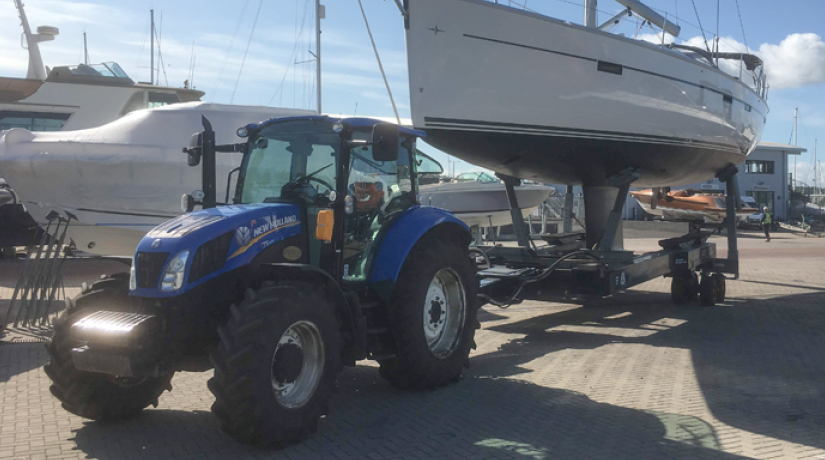
Améliorer la sécurité maritime
La gamme de solutions d'avertissement de proximité ZoneSafe comprend sensor-activated products that can easily address these issues.
ZoneSafe sensor-activated warning signs communicate directly with working vehicles and automatically illuminate when approaching. This means pedestrians in the area are immediately drawn to the sign, alerting them of the danger. The system is proven to reduce potential collision risks between pedestrians and vehicle traffic.

Comment fonctionnent les panneaux d'avertissement activés par capteur ?
A sensor is mounted to the vehicle, and a detection zone is created around signage at an adjustable distance. The signage is only activated when a vehicle reaches the detection zone, and it automatically illuminates and, in some cases, sounds an alarm to alert pedestrians of the vehicle’s presence (if required).

The warning is only active when a vehicle is present, so the signage offers an engaging solution that grabs attention when needed. The sign uses alternating, flashing amber lights to create a highly visual experience, alerting everyone of the presence of risk.
Unlike a static warning sign, which often gets filtered out, ZoneSafe’s sensor-activated sign draws attention only when a potential hazard exists and then automatically turns off, preventing sign blindness and over-warning when the risk of an accident or collision is no longer present.
Signalisation active de ZoneSafe offers a practical solution to pedestrian/vehicle collision risk in numerous environments including ports and marinas. ZoneSafe is a powerful tool for enhancing onsite safety, reducing the risk of collisions, raising awareness and driving positive, safe behaviours.
Get in touch to discuss maritime safety and learn more about ZoneSafe.
Contactez nous
Appelez-nous : +44 (0)1202 868000
Envoyez-nous un courriel : sales@zonesafe.com
[2] Introduction à la sécurité des transports sur le lieu de travail - HSE

